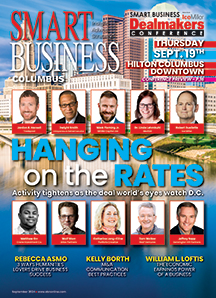Own your own backyard
With sales flagging, there was no time to lose. Greggor immediately hit the streets of San Francisco to assess Anchor Brewing’s assets in hopes of reversing the slide.
“We needed to invest in new equipment, business systems and IT, but you can’t focus on that when sales are flat, and you’re losing money,” Greggor says.
“You need to get on top of your existing business before you expand or launch new products. I’ve been focused on building the business from day one.”
Greggor polled bar owners, retailers and distributors throughout San Francisco to gauge their perceptions of Anchor Brewing’s product and brand. Having a prominent brand is important for any consumer product, but it’s critical in the beer industry where consumers not only consider taste and price when choosing a beer. The brewery, style of the beverage and how it matches a mood, food or activity also factor in.
“I needed to know what Anchor Steam stood for because the only way to build a brand is to live it and wear it every day,” he says. “I wanted to understand what was good and what was bad about our brand and shift the momentum by developing solid relationships with our distributors.”
Because the U.S. features a three-tiered system that requires brewers to go through independent distributors and create exclusive territories, positive relationships with distributors are critical to driving sales. Anchor Brewing had fallen off distributors’ radar because of a lack of attention and fading cachet.
Distributors listened to Greggor’s pitch out of homage for the Anchor Brewing brand. But his promise to invest resources and increase efficiencies was the impetus that inspired some to re-engage.
“I couldn’t just ask for another chance,” he says. “I needed to engage the wholesale community and show them how we could be successful working together. People won’t follow you unless they know where you’re headed.”
He consummated a series of transactions to realign the firm’s distribution network and appointed a lead distributor to help Anchor Brewing reclaim San Francisco.
“Retaking San Francisco became our No. 1 priority,” he says. “There’s no sense in moving forward until you own your own backyard.”
Greggor also strengthened Anchor’s ties to another local icon, the San Francisco Giants. Their collaboration produced a limited-edition 12-pack featuring the Giants’ colors and logos, a sweepstakes and the introduction of an Anchor Brewing suite at AT&T Park. Aligning the two historic brands worked like a charm.
“Anchor Steam became the No. 1 tap in San Francisco in 18 months,” Greggor says. “Wholesalers who initially took a leap of faith have become believers because they’ve doubled their business.”
Align your branding and business strategies
An effective brand strategy doesn’t evolve in a vacuum, it’s an outgrowth of a clear business strategy. While Greggor was gathering market intelligence, he was also learning the ins and outs of the brewing business, garnering support for his ideas from his partner and employees, and creating a five-year road map to profitability.
“You have to be careful about sticking your neck out too far or you’ll lose credibility,” he says. “I would rather spend less money initially and have a sales plan that looks like a hockey stick than lose a lot of money and be forced to dig out of a hole.”
Greggor attributed some of Anchor Brewing’s financial woes to a structure that featured top-down decision-making, antiquated systems and machinery and a cursory understanding of the elements that influence profitability.
“We didn’t know how much it cost to produce a keg or a six-pack and there was zero focus on margins,” he says. “That should never happen in a mature company. Monitoring the cost of goods and adjusting prices is critical in manufacturing.”
After importing an industry-savvy CFO, Greggor installed budgets, controls and incentive plans that encouraged brewery managers to think and act like owners. Since a company’s culture impacts its brand and financial results, cultivating an empowered workforce supports Anchor Brewing’s pledge to deliver a high-quality product and nurture positive relationships with distributors while achieving scalable, profitable growth.
“You can’t drive a company forward without a plan or a budget,” he says. “To empower people, you have to put controls in place.”
Using the business plan as a directional map, Greggor and his team continued to make substantial investments, with the goal of reducing the loss in 2010, 2011 and 2012, breaking even in 2013 and turning a profit in 2014.
“My advice is don’t have a revolving door,” Greggor says. “Retain your management team, be patient and empower people because your employees will keep your promises and increase your brand’s value if they feel secure.”

